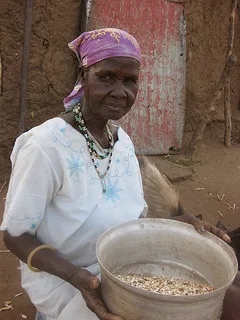Facts about cowpeas
18 Cowpea facts, Cowpeas are commonly referred to as black-eyed pea or niébé. Read cowpeas also known as black-eyed peas listing of facts.
Cowpeas Black-eyed peas listing of facts.
1. Cowpea is an important staple crop in sub-Saharan Africa, especially in arid Savannahs of West Africa and the Sahel.
2. Cowpeas are a valuable source of vegetable protein, vitamins as well as valuable income.
3. Western and Central Africa is the leading cowpea producing regions in the world producing around 64 percent of the estimated 3 million tons of cowpea seed produced each year.
4. Nigeria is the world’s leading cowpea producing country; Senegal, Niger, Ghana, Mali, Cameroon and Burkina Faso are significant also significant producers.
5. Niébé is a variety of cowpea grown by many women small farmers, throughout West Africa.
6. Black-eyed peas get their name from their characteristic appearance of a black dot in the middle of a cream colored bean.
7. The black-eyed pea is believed to have been introduced to the United States through the African slave trade.
8. Black-eyed peas are said to bring good luck when eaten on New Year's Day in the Southern US.
9. The peas represent good luck, and are served with collard greens that represent money.
10. Black-eyed peas are full potassium, calcium, magnesium, and iron.
11. Niébé is a variety of cowpea; the drought-resistant bean thrives even in the dry, arid soils of the Sahel.
12. The niébé bean improves soil quality in the Sahel by fixing nutrients since its nitrogen requirements low; its roots form nodules that contribute to the fixation of atmospheric nitrogen.
13. Approximately 80% of the atmosphere is nitrogen gas but most of it is unusable by most living organisms.
14. The niébé beans as does most legumes convert unusable nitrogen into a form usable by plants. This is a good thing because plants, animals and microorganisms can die of nitrogen deficiency.
Black-eyed peas or cowpeas originated from West Africa.
15. Cowpeas are the most important seed legume in the tropical Savannah areas of Africa.
16. Black-eyed peas or cowpeas are grown and eaten extensively in Asia, South and Central America, the Caribbean, the United States, the Middle East and Southern Europe.
17. Cowpea plays an important role in the livelihoods of many rural families in Africa, Latin America and Asia by providing nutrients deficient in cereals.
18. Cowpeas provide the bulk of proteins and vitamins such as folic acid, micro-elements such as iron, calcium, zinc and also carbohydrates in many food deprived areas of the world.
Together we build awareness that boost harmony, education, and success, below are more links to articles you will find thought provoking.
- Historical African Country Name
- Top 20 Largest Countries in Africa
- How many countries does Africa have?
- Roots of Africanized Christianity Spiritual Songs
- Chocolate Processing Facts History and Recipes
- Awesome Kenyan Woman
- Land is Not For Women in Sierra Leone
- African Kente Cloth Facts
- Accra the Ghanaian Capital Ultimate Mall Experience






